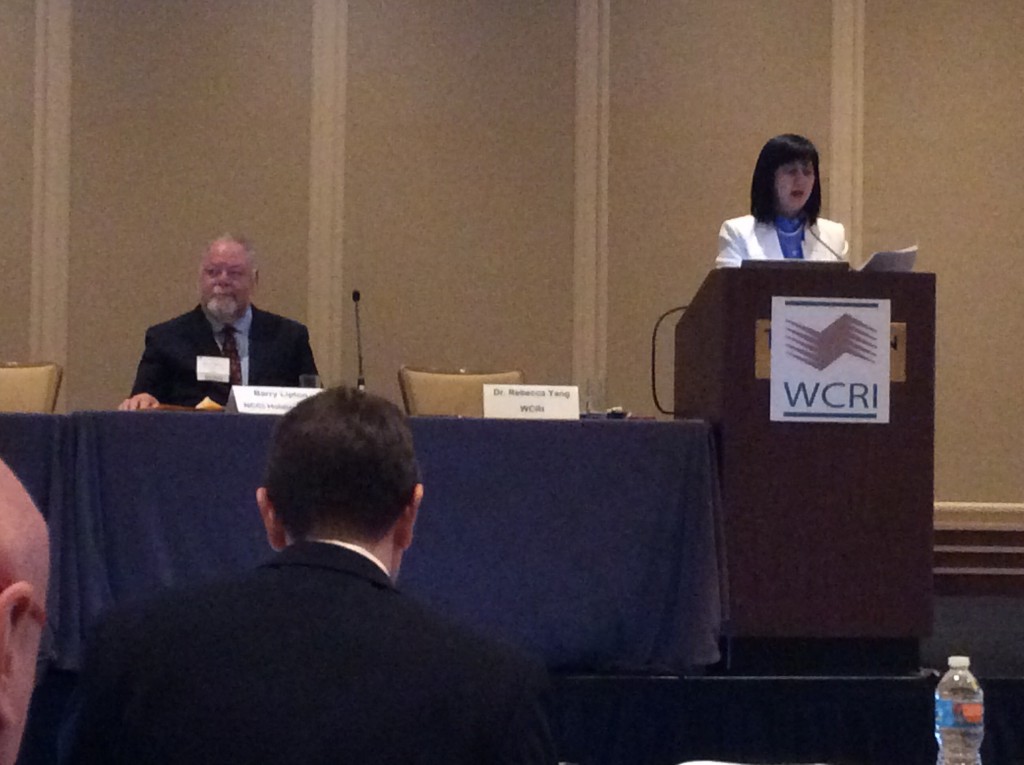Workers’ Compensation Fee Schedules: Price Impacts & Perverse Effects
At the WCRI Annual Conference Rebecca Yang (WCRI) and Barry Lipton (NCCI) led a discussion around workers’ compensation fee schedules.
Mr. Lipton presented results from an NCCI study on the impact of fee schedules. The question on the effectiveness of fee schedules focuses on how workers’ compensation reimbursement rates compare to that of group health. The study showed that in many states the workers’ compensation reimbursement rates are significantly higher than under group health. Thus, even if a payer has a discount arrangement with a workers’ compensation physician network to get pricing below the fee schedule they are still paying higher than group health would pay for the same service. One of the areas where this fee gap is the most notable is surgical costs.
Another problem the study noted is that providers who were charging less than fee schedule amount increased their pricing to match the fee schedule. Thus, the fee schedule amount becomes the market rate for reimbursement. This comes into play when the fee schedule is evaluated in the future for adequacy.
In an analysis of fee schedules, Illinois stands out as having the largest gap between what workers’ compensation pays compared to both group health and Medicare. This is because Illinois fee schedule is based on billed charges, where most many state fee schedules are a variation of Medicare reimbursement rates.
Rebecca Yang discussed the adverse effects of freezing fee schedules, reducing fee schedules, and low fee schedules.
In states where the workers’ compensation fee schedules are below Medicare and group health reimbursement rates, there is concern that access to care could becomes an issue for injured workers. However, in reality there are very vew states where this could happen. Of the 42 states with fee schedules, there are only two states where workers’ compensation reimbursement rates for certain services were below Medicare rates. In most states, workers’ compensation reimbursement rates are at least 30% higher than Medicare rates.
In states with lower fee schedules or frozen fee schedules, the WCRI study found increased utilization of services which suggests providers are making up for the low fee-for-service reimbursments by increasing the volume of services per patient. The study also showed increased upcoding for office visits in California and Louisiana, states where their fee schedule for such services was either low or had not been adjusted in several years. Examples from Florida showed providers increased utilization of MRIs done in hospital outpatient settings significantly after fee schedule reforms reduced reimbursement rates for MRIs done in non-hospital facilities.
This change in provider behavior is not unique to workers’ compensation. Changes to Medicare reimbursment rates in the past have also led to changes in provider utiliation and billing patterns so that revenue streams could be preserved.


